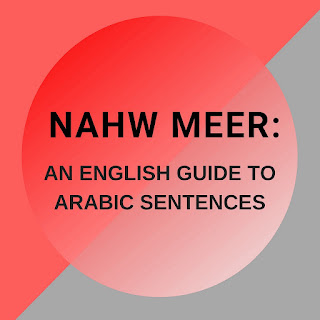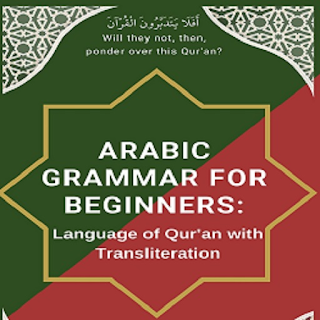3.0/3.1 - Word Basics and Types of Nouns
English language grammar is divided into 9 parts of speech. These are:
2. Verbs
3. pronouns
4. Adverbs
5. Adjectives
6. Conjunctions
7. Articles
8. Prepositions
9. Interjections
Arabic, on the other hand, covers all of these in three categories which are:
2. Verbs
3. Particles
Now, let’s define these in some more detail.
Section 3.1 - Types of Nouns - Introduction
1) All Arabic words, whether Nouns or Verbs, come from a three-alphabet root. A root is called an empty trilateral root mu-jar-radulthu-laa-thi الْثُلَاثيْمُجَرَّدُ. There are three alphabets which are faa ف, 'ain ع, and laam ل which are used as radicals to define all rules. The simplest word one can make with these alphabets will be فَعَلَ fa-'a-la which means he did. We will learn more about these when the topic of verbs is covered in a later section.
2) Using these three root letter words, specific additional alphabets are added, and Verbs are constructed, and these are called مَزِيْدٌ فِيْهِ Mazee-dunFihi Verbs. The extra alphabets can be one, two, or three. This topic is covered in Chapter 12.
Let us take, as an example, the three root letters from right to left (ع، ل، م). From these alphabets, we can make many words (Verbs and Nouns) by changing them using rules that will be covered later as Verbs or Nouns:
1. عَلِمَ ('ali-ma) is a (thu-la-thi) Verb meaning he knows.
2. أَعلَمَ ('aa’-la-ma) is a mazeed fihi Verb with one extra alphabet meaning he informed.
3. عَلًّمَ ('alla-ma) is a mazeedfihi Verb with one extra alphabet meaning he taught.
4. تَعَلَّمَ (ta-'alla-ma) is a mazeed fihi Verb with 2 extra alphabets) meaning he learned
5. عَالِمٌ ('aali-mun) meaning a "scholar" is a Noun.
6. عَلِيْمٌ ('alee-mun), meaning "most knowing," is a Noun.
7. تَعْلِيمٌ (ta'-lee-mun), meaning "education," is a Noun.
Then there is a small number with 4 alphabets (quadri-lateral) called rubaa-'ee (رُبَاعِيْ) and with 5 alphabets (Penta-lateral) called a khumaa-si (خُمَاسِيْ).
Quadri-lateral root example: The basic quadri-literal Verb form with four radical root letters (ف ع ل ل) is فَعْلَلَ fa’la-la which means “he rolled” with the example (و س و س) used in Qur’an as (وَسْوَسَ) was-wasa meaning “to whisper.” Another would be (ز خ ر ف) and the Verb زَخْرَفَ zakh-raf, meaning “to decorate” something. The quadri-literal root (د م د م) occurs only once in the Qur’an, as Verb dam-dama (دَمْدَمَ) dam-dama meaning destroyed.
There is a small number of Nouns that have 5 root letters. However, no Verbs have 5 root letters.
Unlike other languages, Arabic has a past tense فِعْلُ الْمَاضِيْ fe'il-ul maa-di but combines the present/present continuous/future tense into one called imperfect tense فِعْلُ الْمُضَارِعِ fe'il-ulmudaa-ri-'yee. The Verbs are usually defined with three attributes: their past tense الْمَاضِيْ al-maa-di, imperfect tense al-mu-daa-ri'u (الْمُضَارِعُ), and its Verbal Noun or Source اَلْمَصْدَرُ almas-da-ru. For example, with the root (س م ع), the way the Verbs and the source are written is as follows (reading from right to left):
سَمِعَ/يَسْمَعُ/سَمِعًا
(Sa-mi-'an) (Yas-ma-'u) (Sami-'aa)
To listen, he is listening/will listen, he listened
(The Source-Noun) (Imperfect tense-Verb) (Past tense-Verb)
***





Comments